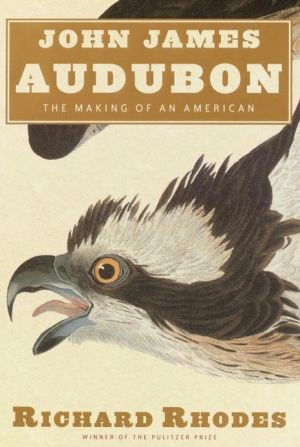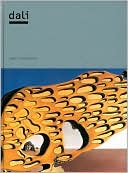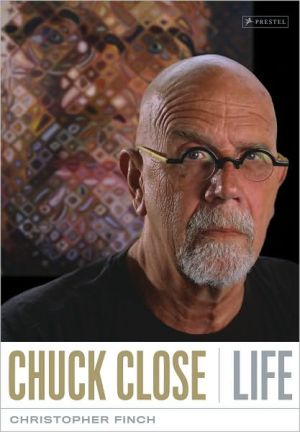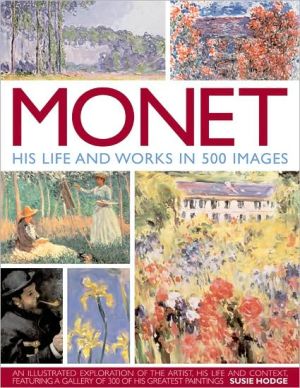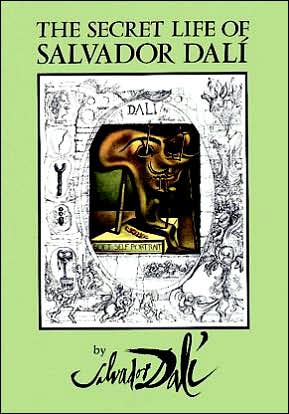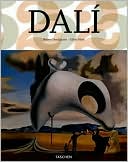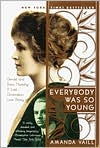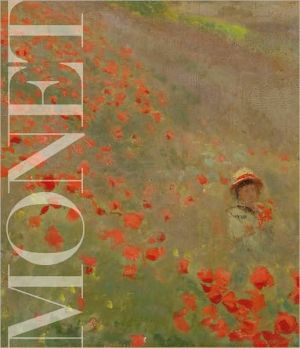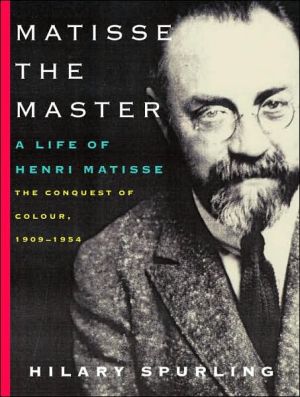John James Audubon: The Making of an American
From the Pulitzer Prize—winning historian Richard Rhodes, the first major biography of John James Audubon in forty years, and the first to illuminate fully the private and family life of the master illustrator of the natural world.\ \ Rhodes shows us young Audubon arriving in New York from France in 1803, his illegitimacy a painful secret, speaking no English but already drawing and observing birds. We see him falling in love, marrying the wellborn English girl next door, crossing the...
Search in google:
An award-winning author who has frequently explored science and American history offers the first major new biography in many years of ornithologist/artist John James Audubon (1785-1851). Rhodes traces Audubon's arrival in America from France, his (for a time) commuter marriage, and career culminating in his magnum opus The Birds of America. He presents a well-rounded portrait of the Audubon Society's namesake and the U.S. of the early frontier period. Illustrations include color plates of Audubon's celebrated watercolors of North American birds. Annotation ©2004 Book News, Inc., Portland, ORThe New YorkerIn 1838, when Audubon completed “The Birds of America,” a monumental work whose flagstone-like pages require two people to turn them, he estimated that its production had cost him a hundred and fifteen thousand dollars, the equivalent of two million dollars today. He raised the money himself, tramping through America and England in search of sponsors, and leaving his family behind for years at a time. His spur was humiliation: French by birth, he had gone bankrupt on the Kentucky frontier, and he decided that his gift for drawing and his affinity for birds could restore his dignity and fortune. Rhodes occasionally lingers too long on his subject’s publishing difficulties (a pet peeve of many authors), but he conveys both the singular glories of the early American wilderness—a sycamore tree crowded with nine thousand swallows—and the solitary desperation of Audubon’s labors.
Chapter One\ MIGRATION\ The sharp cries of gulls wheeling above the East River docks welcomed the handsome young Frenchman to America. Crossing from Nantes in late summer, he had been a month and a half at sea and he was grateful for the solidity of New York cobblestones. That August 1803 he was four months past his eighteenth birthday, barely fledged, but the United States was hardly older: Lewis and Clark were just preparing to depart for the West. His father owned a plantation called Mill Grove on Perkiomen Creek near its junction with the Schuylkill River northwest of Philadelphia, close above Valley Forge, and that was where he was going. His father was a former sea captain and retired French Navy officer who had commanded a corvette in the final battle of the American Revolution. Jean Audubon had sent his cherished only son to America to escape conscription into the forces Napoleon was mustering for his war with England, joined the previous May.\ Wherever the young man went he watched the birds. Birds moved through the human world at will. In their large freedom they lived rich lives in parallel with people and people hardly knew. On his passage from Nantes, at the Grand Banks off Newfoundland where his ancestors had fished for cod, far out at sea, he had scattered ship's biscuit on the deck and drawn migrating brown titlarks (American pipits)* down from the heavens to feed. "They came on board wearied," he would remember and write thirty years later, "and so hungry that the crumbs of biscuit thrown to them were picked up with the greatest activity."\ He studied birds for the fables they enacted-he carried La Fontaine's Fables with him as a guide-and beyond fable he studied them to learn their habits, the patterns and systems of their lives. Studying birds was how he mastered the world, and himself. Leaving his friends, his father and his country had disheartened him. The long hours of sailing brought "deep sorrow or melancholy musing. . . . My affections were with those I had left behind, and the world seemed to me a great wilderness." Then the New World rolled across the horizon, a real and physical wilderness beyond its settled rim. He had begun drawing birds in France. Now, "prompted by an innate desire to acquire a thorough knowledge of the birds of this happy country, I formed the resolution, immediately on my landing, to spend, if not all my time in that study, at least all that portion generally called leisure, and to draw each individual of its natural size and coloring." This is retrospect, of course, but it catches the eighteen-year-old's excitement and bravado.\ His name-his new name, his name as of the day he had boarded ship-was John James Audubon. In France for the previous ten years he had been Jean-Jacques Fougère Audubon. (Fougère-"fern"-was an offering to placate the Revolutionary authorities, who scorned the names of saints.) From his birth on April 26, 1785, until 1793 he had been Jean Rabin, his father's bastard child, born on Jean Audubon's lost Caribbean sugar plantation on Saint Domingue (soon to be renamed Haiti) to a twenty-seven-year-old French chambermaid, Jeanne Rabin, who had died of infection within months of his birth. His father's wife in France, Anne Moynet, a generous older widow whom Jean Audubon had married long before, had welcomed her husband's natural son to Nantes and raised him as her own, but his stigmatic birth was a secret John James was sworn to hide: in France bastard children were denied inheritance.\ To complicate his identity further, he began using the name LaForest, enlarging on Fougère: John James LaForest Audubon.\ He was taller than the average of his day, lean and athletic, unself-consciously vain:\ I measured five feet, ten and one half inches, was of fair mien, and quite a handsome figure; large, dark, and rather sunken eyes, light-colored eyebrows, aquiline nose and a fine set of teeth; hair, fine texture and luxuriant, divided and passing down behind each ear in luxuriant ringlets as far as the shoulders.\ Five feet nine is nearer the truth-taller than his father, who was five feet five. His hair was chestnut, his beak of a nose certifiably French. But without question women found him handsome. "He is the handsomest boy in Nantes," his adoptive mother had written her husband once, "but perhaps not the most studious."\ He could sing, dance, play the flute, the violin and the recorder-like flageolet, fence, hunt, shoot and ride and draw. He was volatile, excitable and vivacious. Young as he was, people already liked to be around him-men and women both.\ Before he could learn American birds he had to learn English. His father had asked the captain of his ship of passage, John Smith, to watch over him. Leaving the ship to cash the letter of credit his father had given him, striding along Greenwich Street above the Battery, John James was staggered by the first symptoms of a life-threatening fever. He remembered it as yellow fever, and it may have been; the jaundicing and frequently deadly infection was a common summer scourge. In 1793 an epidemic that refugees had carried from Saint Domingue had killed nearly five thousand people in Philadelphia, and it had struck again that summer of 1803 in New York as well. Illness made Smith's mission imperative. The captain saw his charge delivered to a boardinghouse outside Philadelphia operated by two good Quaker women and left him in their care. Nursing him back to health, the women taught him Quaker English. He thee'd and thou'd his intimates ever after.\ when john james's nurses thought he was well enough to travel, they sent word to his father's agent in Philadelphia, and soon a prosperous Quaker lawyer carriaged to their boardinghouse to fetch the young man away. Miers Fisher had negotiated the purchase of Mill Grove for Jean Audubon in 1789. Twenty-three hundred English pounds in gold and silver-roughly $200,000 today-bought 284 acres of fair Pennsylvania farmland and woods with a two-story dormered fieldstone mansion set high on a steep lawn, stone barns and outbuildings and working water-powered flour and sawmills down the lawn beside the broad Perkiomen. The property was meant to be an investment. Jean Audubon had begun his maritime career at twelve as a cabin boy on his father's merchant ship out of Les Sables-d'Olonne downriver from Nantes on the west coast of France below the Loire. He had advanced to apprentice sailor and eventually captained ships of his own, fishing on the Grand Banks and hauling cargo. Many profitable voyages later, he had acquired a sugar plantation and refinery on Saint Domingue, France's most prosperous colony, where sugar and indigo worked by half a million African slaves supplied two-thirds of pre-Revolutionary France's overseas trade. But slave uprisings in Guadeloupe and Martinique and the first stirrings of revolution in France and on Saint Domingue itself had alerted the shrewd négociant to potential disaster. The funds he used to buy Mill Grove came from the hasty sale of a portion of his Les Cayes plantation. Two years later, back in Nantes and an officer in the Republican Guard, he arranged to have his only son and the boy's younger half-sister, Rose, the daughter of a second, quadroon mistress, delivered to him from Saint Domingue. The ship entered the Loire in June 1791 with Rose listed on the manifest as Jeanne Rabin's daughter, obscuring her mixed race; the revolution that eventually established the Republic of Haiti engulfed the island in August.\ At Miers Fisher's country house northwest of Philadelphia young Audubon improved his English further, but by Quaker standards his recreations were shocking. Fisher "was opposed to music of all descriptions," he complains, "as well as to dancing, could not bear me to carry a gun, or fishing-rod, and, indeed, condemned most of my amusements." Fisher had impressionable daughters and adolescent sons. As soon as he could decently do so, he delivered his client's wayward heir on to Mill Grove to board with its less observant Quaker tenant William Thomas and Thomas's wife and several sons. John James counted Fisher's departure "a true deliverance" but at least in recollection honored him: "This was only because our tastes and educations were so different, for he certainly was a good and learned man." Fisher arranged for Thomas to pay John James a quarterly allowance subtracted from his $400 annual lease, and the young man settled in.\ Mill Grove delighted him. "Hunting, fishing, drawing, and music occupied my every moment; cares I knew not, and cared naught about them." But since his father had by then lost most of his wealth in the revolutions of France and Saint Domingue, what would be the young man's occupation? Jean Audubon had expectations of Mill Grove. The property was known for its mineral deposits, particularly lead. Lead, with its low melting point and high density, was a valuable commodity at a time when hunting with muzzle-loading flintlocks was nearly universal, Quaker lawyers excepted. Hunters ramrodded their weapons with powder, paper and ball each time they fired and routinely carried lead and bullet molds to make their own balls.\ In April 1802 Miers Fisher had alerted his Nantes client to his property's promise:\ [At] about the expiration of the [first] five years' [lease], or probably before, [William Thomas] discovered what he thought a very rich lead mine on the premises & communicated the discovery to me, at the same time producing a sample of the ore. Upon inquiry I found that he thought it to exist there in very great quantities & seemed desirous to purchase the land; I told him I had no authority to sell it . . . but promised to inform thee thereof. . . . In this expectation I have kept him on the place ever since & he has paid his rent with more punctuality than is usual with tenants here. . . . He is the only person who knows where the mine is to be found, & will not disclose it until he has some benefit allotted to him for his discovery. . . . He has a very high opinion of it-I have had a sample of it assayed & am assured it will yield about 60 or 70 percent of lead from the 100 lb. of ore. . . . Therefore come in person or employ a confidential friend to judge for thee in this important affair-it may be sufficient to restore all thy losses.\ Letters traveled slowly and uncertainly in the age of sail, and another year passed before Jean Audubon could send someone to represent him, a young Frenchman supposed to be knowledgeable about ores and mining. Francis Dacosta had arrived in Philadelphia in the spring of 1803, a few months before John James, carrying Jean Audubon's power of attorney. He was authorized to sell Thomas the Mill Grove acreage that lay across the Perkiomen from the main house in exchange for the location of the lead vein, but Miers Fisher thought such a move unwise-what if the Perkiomen bottomland covered even more valuable veins of ore?-so Dacosta pried the location of the vein from Thomas by paying $300 of his $400 annual lease that May and promis-ing more. Corresponding with Dacosta about these first negotiations, Jean Audubon revealed his parental program: "Remember, my dear sir, I expect that if your plan succeeds, my son will find a place in the works which will enable him to provide for himself, in order to spare me from expenses that I can only with difficulty support." Dacosta had taken rooms in Philadelphia that fall to wait out the winter before opening up the mine, which meant John James could continue carefree at Mill Grove at least until spring.\ To cut a proper figure a young man needed a horse. Thomas had none to spare. An English family had bought the larger plantation up the hill to the south and across the road and was just moving in; John James might inquire there. On November 11 he did and met William Bakewell, the patriarch, a sturdy, educated squire from Derbyshire by way of New Haven, Connecticut, where he and his brother Benjamin had owned and operated an ale brewery until it burned down the previous winter. The Bakewells had arrived only two days before; William turned John James over to his guest, General Andrew Porter of nearby Norristown, and went about his business.\ William Bakewell was a blunt and skeptical man, a Unitarian connected to Joseph Priestley, the experimental chemist, discoverer of oxygen and ammonia and religious reformer who had emigrated to America in 1794 and founded a colony near Northumberland, Pennsylvania, where William had also bought land. ("A feather-bed to catch a falling Christian," the Bakewell family physician, Erasmus Darwin, had jokingly called Unitarianism, but dissent was dangerous business-mobs burned down Priestley's house and other dissenting leaders found themselves transported among common criminals to Botany Bay.) William had seriously considered buying a farm in the Shenandoah Valley before Porter pointed him to the Greek Revival mansion with its lush estate and wide view of Valley Forge southward across the Schuylkill. He chose it for its fertility and accepted its odd name, Fatland Ford. "It is not improbable," he wrote a Derbyshire cousin, "that the name of the ford [on the Schuylkill below the mansion] was taken (tho' rather vulgarly expressed) from the quality of the land as it is very fertile indeed."\ John James pursued his horse buying. William Bakewell returned his call and found him away but left his card and an invitation to go hunting. Audubon may have been away-he claimed he was out looking for birds-but he had a chip on his shoulder about the English, who had twice jailed his father as a prisoner of war in his maritime years. His father had dismissed the boy's prejudice magisterially, telling him "thy blood will cool in time. . . . Thou has not been in England; I have, and it is a fine country." The young man's blood cooled early in the new year 1804 when he encountered William Bakewell\ and his pointers pursuing grouse in the snow-silenced woods along the Perkiomen. "I was struck with the kind politeness of his manner, and found him an expert marksman. Entering into conversation, I admired the beauty of his well-trained dogs, and, apologizing for my discourtesy, finally promised to call upon him and his family." Mrs. Thomas had been encouraging him as well, coaching her boarder that the Bakewells had attractive and interesting daughters.\ Audubon called at the Doric-columned, pedimented two-story mansion house just after the middle of January 1804:\ It happened that [William Bakewell] was absent from home, and I was shown into a parlor where only one young lady was snugly seated at her work by the fire. She rose on my entrance, offered me a seat, and assured me of the gratification her father would feel on his return, which, she added, would be in a few moments, as she would dispatch a servant for him. Other ruddy cheeks and bright eyes made their transient appearance, but, like spirits gay, soon vanished from my sight; and there I sat, my gaze riveted, as it were, on the young girl before me, who, half working, half talking, essayed to make the time pleasant for me. Oh! may God bless her!
Part 1The Making of an American1Migration32"I Shall Sail on a Sheep"183Settling the Interior344Louisville in Kentucky465Alexander Wilson626By Flatboat to Ste. Genevieve777Birds in Flight908Flocking to Kentucky1079The Bad Establishment12310"Hopes Are Shy Birds"138Part 2America My Country11Down the Mississippi15712The Fair Incognito17213Lessons to a Young Lady18614Bayou Sarah19715A New Start20916Enthusiast or Lunatic227Interlude: Audubon at Sea240Part 3The Birds of America17Liverpool24918"I Will Publish This"26419Into the Monster's Mouth28120"I Have Wished for Thee Every Day"29721"I Will Sail for America"31222A Man in a Hurry32423Woods, Woods, Woods34024The Varied Splendor of American Nature35625Labrador37126A Monumental Work of Art38927Days of Deepest Sorrow40528The Real Course of Nature's Intentions419Envoy436Notes439Bibliography481Acknowledgments491Index493
\ Jonathan RosenRhodes has managed to do for Audubon what Audubon did for birds. And like Audubon, who insisted on life-size paintings and prints, and who saw his Birds of America as a kind of grand rendering of the entire country, in this splendid biography Rhodes has produced nothing less than a portrait of the United States in its formative years.\ — The New York Times\ \ \ \ \ Kenn KaufmanAudubon's colorful life story has been told from many perspectives, but Richard Rhodes, a skilled researcher and historian, proves there is still fresh ground to be worked. He illuminates the American frontier of the early 1800s with a deft use of precise details. Literally hundreds of quotes, short and long, bring to life the voice of that era. Rhodes has given us the most three-dimensional portrait yet of Audubon the man.\ — The Washington Post\ \ \ The New YorkerIn 1838, when Audubon completed “The Birds of America,” a monumental work whose flagstone-like pages require two people to turn them, he estimated that its production had cost him a hundred and fifteen thousand dollars, the equivalent of two million dollars today. He raised the money himself, tramping through America and England in search of sponsors, and leaving his family behind for years at a time. His spur was humiliation: French by birth, he had gone bankrupt on the Kentucky frontier, and he decided that his gift for drawing and his affinity for birds could restore his dignity and fortune. Rhodes occasionally lingers too long on his subject’s publishing difficulties (a pet peeve of many authors), but he conveys both the singular glories of the early American wilderness—a sycamore tree crowded with nine thousand swallows—and the solitary desperation of Audubon’s labors.\ \ \ \ \ Publishers WeeklyBorn in 1785 in Saint Domingue (now Haiti), the bastard son of a French naval officer and a chambermaid, Audubon was taken to France by his father and then sent to America in 1803 to escape conscription into Napoleon's army. He began drawing birds as a child, and in America this passion grew into an obsession. His business ventures failed, and he was often short of money, but for him, birds overshadowed everything except his devotion to his wife, Lucy, who encouraged him in all his endeavors and supported the family when he went on quests for new birds to paint. Traveling into the American wilderness, Audubon, completely at home on the frontier, observed birds endlessly, and in 1826 set off for Europe to spend years promoting his multi-volume Birds of America. His life makes an engaging story, and Pulitzer Prize winner Rhodes (The Making of the Atomic Bomb) chronicles every aspect of it, the commonplace as well as the audacious, in this thoroughly researched biography. Rhodes's prose style is subtle, enlivened by passages from Audubon's own letters and journals, and he presents an agreeable picture of a man who charmed almost everyone he met, remained devoted to his wife even though he abandoned her for years at a time and was not above lying about his birth and other details of his life. Perhaps most important, Rhodes succeeds in shedding light on how Audubon perfected his ability to capture in his depictions of birds so much life and emotion that they transcend traditional wildlife painting. Illus. throughout; 16 pages of photos not seen by PW. Agent, Janklow & Nesbit. (Oct.) Copyright 2004 Reed Business Information.\ \ \ \ \ KLIATTJohn James Audubon is probably best recognized as the dauntless 19th-century artist who set out to draw and paint all of the native bird species of North America. He went farther in this impossible task than one might think, and the results were not only a huge artistic success but also scientifically invaluable. Although he nearly bankrupted himself to publish some 435 double-elephant folio prints, the public immediately took to them, and examples of his colorful work graced most of the parlors of our grandmothers' generation. This engaging and hardworking artist has been profiled many times, but Richard Rhodes' popular biography strikes a nice balance between Audubon's artistry and the dynamic American milieu in which he lived. In 1803, the young Frenchman was packed off to America to escape the bloody chaos of the French Revolution. Arriving safely on our shores, scarcely older than the new Republic itself, Audubon soon found himself ensconced in a yeasty new nation where everything seemed to be in motion. Entranced by the all-but-unexplored wilderness so near at hand, overflowing with fascinating birds and quadrupeds, he set about his life's work amid the rip-roaring frontier politics and frenetic westward expansion of the times. Rhodes has authored several works of serious nonfiction, and is skilled at carrying his reader along while he explores the broader themes of his subject. Readers interested in art will find plenty of fascinating detail about Audubon's methods of posing his subjects and preparing the colored lithographs so firmly associated with his name. KLIATT Codes: SA*—Exceptional book, recommended for senior high school students, advanced students, and adults. 2004,Random House, Vintage, 511p. illus. notes. bibliog. index., Ages 15 to adult. \ —Raymond Puffer, Ph.D.\ \ \ \ \ Library JournalAudubon's epic life (1785-1851) as artist, devoted husband, writer, adventurer, hunter, and his own best publicist is entertainingly set forth here in full detail, drawing heavily on the Audubon family's copious writings as well as those of his many significant contemporaries, be they friends, enemies, or other naturalist-colleagues. Rhodes author of the Pulitzer Prize-winning The Making of the Atomic Bomb brings to life the intense, charming artist best known for his dramatic, life-sized bird paintings but who also excelled at fencing, dancing, tutoring, skating, and befriending wealthy patrons. While there have been two other recent biographies William Souder's Under a Wild Sky concerned itself primarily with Audubon's life in America, and Duff Hart-Davis's Audubon's Elephant focused heavily on his experiences in Europe Rhodes's thorough and well-documented book is the most complete record since Alice Ford's 1964 John James Audubon. Highly recommended. [See Prepub Alert, LJ 6/1/04.] Henry T. Armistead, Free Lib. of Philadelphia Copyright 2004 Reed Business Information.\ \ \ \ \ Kirkus ReviewsThe Pulitzer-winning historian and biographer finds a pleasing subject in an American original: the traveler, chronicler, scientist, painter, and entrepreneur whose name remains legend. Jean Rabin-his name until he was eight-was born out of wedlock, and though his father and his wife welcomed him into their home in Nantes, all were aware that "in France bastard children were denied inheritance." Not so in America, to which the renamed, 18-year-old John James Audubon came in 1803, "lean and athletic, unselfconsciously vain . . . his beak of a nose most certifiably French." He was charged with tending to his father's business interests, but, Rhodes writes, he had little talent for the work-and besides, he wanted nothing more than "to complete a collection [of ornithological illustrations] not only valuable to the scientific class, but pleasing to every person." He was single-minded in this devotion, driven, Rhodes suggests in a moment of psychologizing, by a desire "literally to revivify the dead." Luckily, he found time to wed a singularly patient young English woman, Lucy Bakewell, who traveled with him across the Appalachians to establish a general store, scarcely complaining about the hardships of the journey, even if she did lament that in frontier Louisville, "there is no library here or bookstore . . . and as Mr. Audubon is constantly at the store I should often enjoy a book very much whilst I am alone." The great virtue here is not so much in giving a thorough, modern life of Audubon, which Shirley Streshinsky did with her Audubon: Life and Art in the American Wilderness (1993); it is in making Lucy Audubon a full partner in the enterprise, if neglected to the point of nearabandonment while her husband cultivated his art and his fame, consciously crafting an image as definitively American-at least as far as his European patrons were concerned-as Daniel Boone's. That makes for an absorbing story, too, and Rhodes (Masters of Death, 2002, etc.) tells it surpassingly well. Outstanding. First printing of 100,000; author tour. Agents: Mort Janklow, Anne Sibbald/Janklow & Nesbit\ \
